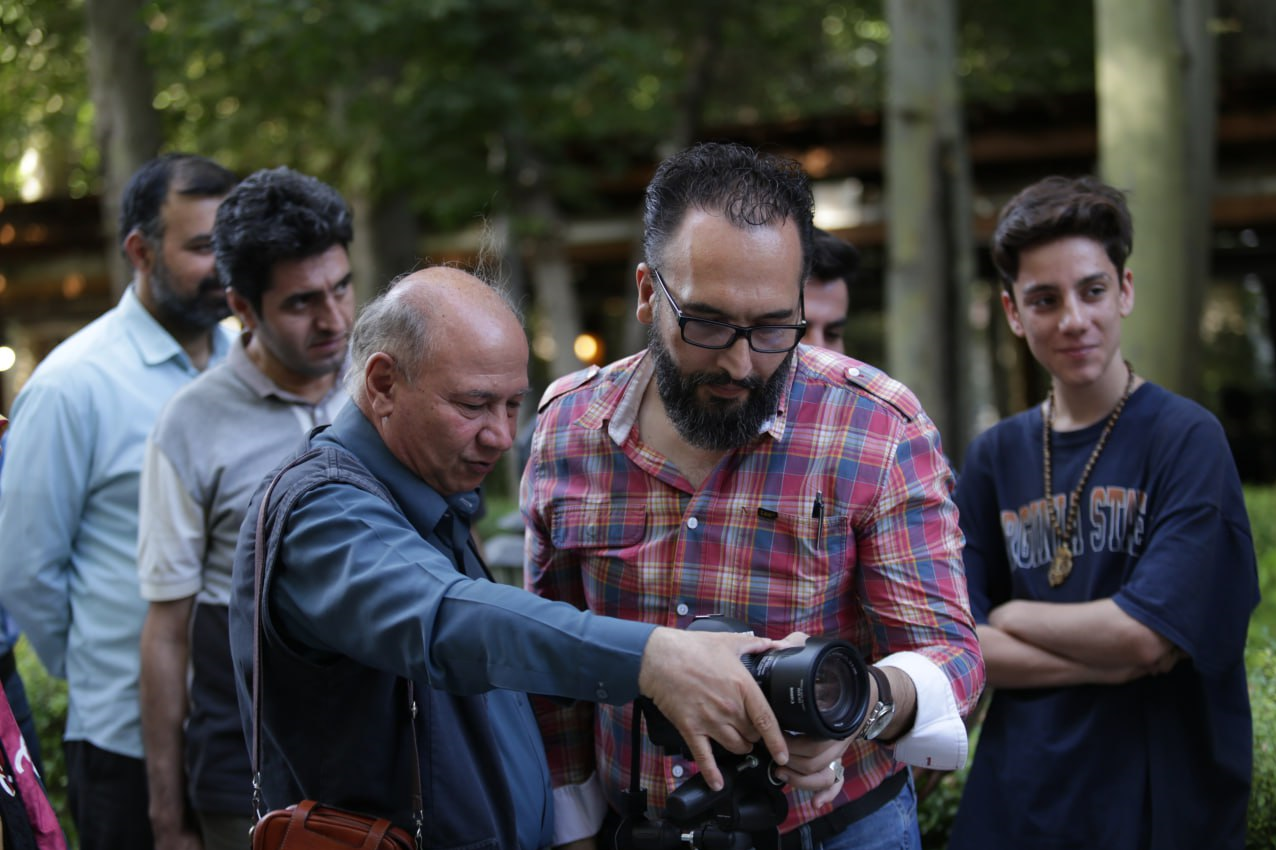Ali Loqmani: To become a filmmaker, you must know the architecture of the film

According to Fars news agency, Ali Luqmani, referring to the common point between the cinematographer and the director of a movie, said: There are many similarities between the director and the cinematographer that both should be aware of. In order to achieve the right visual atmosphere of the film, the director needs to be familiar with the technical rules of the cinema language, because if he is not familiar, he may have produced a visual work, but that work is not cinematic; Cinema has its own grammar that distinguishes it from other arts.
Stating that one of the visual components of the film is the structure of the image, he added: The structure of the film consists of various components, one of which is the architecture within the image, and this architecture can be very effective in the goal that the filmmaker is supposed to achieve through the image. The image is also effective when the desired feeling is created in it and transferred to the audience.
Loqmani also said about creating a suitable image: to create this feeling and the right atmosphere, we need a series of rules, knowing which will help us to create the right atmosphere. Many of the images we see move against the goal in terms of architecture and structure, so like a painting, the composition of what is seen on the screen is very important. In the cinema, we may draw a single scene and decoupage in different forms, and these different forms create different connections with the audience.
The cinematographer of the movie “Shahrzaiba” continued: Today, the main tools we use for making short and documentary films are cameras that also take pictures, and this tool has imposed certain performance methods on users that did not exist before. How different our visual structure can be in a fixed mise-en-scène and how to change the composition, arrangement and architecture of the shot with the specific aesthetics of the lenses and how these changes help the audience to connect with the subject are things that a cinematographer should consider. be aware
He explained about the lenses in filming: the shorter the focal length of the lens, the wider the viewing angle. For example, in a 18-135 lens (18 is a wider angle and 135 is a narrower angle), thus with an 18 lens, when the exposure is supposed to be fixed and we have the smallest focal length, we have to move the camera as far as we can to medium. To get the shot, but when we shoot with the 135 lens, we have to take a distance so that the same size as we took with the 18 is recorded.
The director of photography of “Tehran Tehran” by Dariush Mehrjooi stated that moving the camera towards the subject is an important principle in filmmaking and added: If they do this twice in a scene, it doesn’t mean that they don’t know how to film, but they want to get the desired view. reach.

He also said about the making of the picture: usually when we want to take a picture together, we like to be together, but when we want to take a picture in space, it is a little different because that place itself may have an identity that is important in the picture, that’s why to show the identity And the character of the desired phenomenon, we should use our lens well and act according to the mise-en-scène and the purpose of the script. To keep the size constant, we increase the distance from the subject and reduce the width of the subject to use that lens in the direction of image aesthetics. Care must be taken in using the type of lens because each lens conveys a feeling to the audience. In fact, by choosing a lens, you can improve or lower the work of other agents in the group.
The shooting director of “Ashk Sarma” stated about the relationship between the image and the script: the beginning and connection of the images is from the script stage; When you read a script, the image is gradually formed according to the topic and atmosphere of the script, and the creation of the image starts from there and even during filming, so from the stage of the script to the filming, consultation sessions and conversations between the cinematographer and the director are very important and necessary because there may be a space in The cinematographer’s mind is not aligned with the director’s, that’s why multiple meetings are needed.
The cinematographer of “Jazireh Rangin” produced by Zinda Yad Khosrow Sinaii continued: What is certain is that the audience is not present in the filming scene and is not a cinematographer, that’s why he accepts any of the images taken. In fact, by choosing the desired lens, we impose on the audience how far away the subject is, and the audience has to accept it. If we, as videographers, have knowledge about lenses and their aesthetics, we can intervene in the geography of the scene.
Referring to being an author in a movie, Loqmani said: You can be an author filmmaker when you know the architecture of the film and the film has its own architect and has become a cinematic work, and you should know that the authority to arrange the plans of an author director is in your hands. He is not the editor. Sometimes it is said that the author director can interfere in all cases if he can only give his opinion. The filmmaker has the duty to discuss the structure of the film with his crew before starting the shoot.
He said about the selection of the actors of a film: if we choose our actors correctly as producers and directors, we will face less challenges and note that we should trust experienced people because they may have ideas that will help us more. . Most of the world’s great directors work with only one or two cinematographers during their professional life, and in this way, the remarkable thing is that the cinematographer’s and director’s views gradually converge during joint work. The most ideal form of performance is that during filming, at least conversations between the director and the cameraman are exchanged, although this issue is more common in documentary cinema.
In another part of this workshop, “Loqmani” answered the questions of those present in the meeting. In response to a question about whether the actor challenges the cameraman, he said: Every film has its own rules. For example, in the movie “Key” made by Ebrahim Frouzesh, a child and a baby were used as actors, and considering that they are children, it is impossible to find more unacting than them because they do not understand the plans and the cameraman had to accept that exactly Film like a script so that the actor understands.
Stating that you should be realistic and know what project you are dealing with and coordinate yourself accordingly, Loqmani continued: It is true that as technicians of the story, we miss things, but we must accept the logic that the overall result of the film It has to be good because if the cinematography is good and the film is not effective, it is useless. The result of all these operations should make the film soar and everyone should be at the service of the film so that the final result is achieved. Certainly, if we proceed with this knowledge, there will be no problem.
In response to a question about the difference between digital and analog filming in recent years, he explained: If we were familiar with virtual and electronic space from the beginning, maybe it wouldn’t be different for us, but it is a bit difficult for someone who has experience of filming with analog system. I think that the digital space has not yet reached the point where we can say that it is passing analog images. Still, the digital image has not been able to cover the feeling and mood of the analog film image, but maybe this will happen in the next 10 years.
Stating that the type of operation is also important, Loqmani reminded: Working with the analog system brings focus and accuracy because it costs money and it is not like the digital system where we can erase the recorded images whenever we want. This topic affects our concentration and attention and after finishing the work we say to ourselves that we wish we had been more careful.
In the end, he said: One of the differences created by digital filming is the presence of actors from two different generations. Actors who were trained with the analog system used to memorize their dialogues completely because of the type of film production and recording limitations, and when they see some actors in front of them not memorizing their dialogues, they get annoyed and this creates the misunderstanding that old actors are bad-tempered.
It should be noted that, in a part of this workshop, in addition to presenting theoretical topics in a practical way, “Ali Loqmani” taught the basic principles of filming and familiarization with different cameras and lenses in the open area of the Cinema Museum.
end of message/
You can edit this article
Suggest this article for the first page

